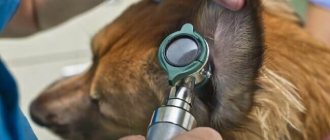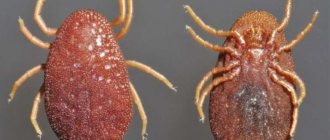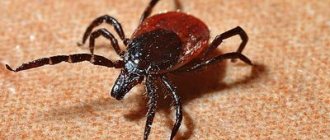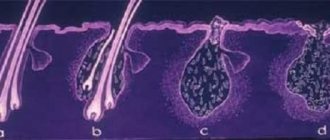90% of people are carriers of eyelash mites (acne glands), but not everyone develops the disease demodicosis. In order not to miss the first symptoms of infection, it is important to know what reasons lead to its development, what a ciliary mite, also known as an eye mite, looks like on the skin of the eyelids, how to make a correct diagnosis and get rid of the parasite.
Causes
Normally, from one to three eyelash mites (demodex) live inside the eyelash bulb. In this case, it belongs to the normal microflora. With such a concentration of microorganisms, clinical symptoms do not appear, so a person is not aware of the existence of demodex in the glands of the eyelids.
It often happens that the immune system loses its functionality, this occurs in the following cases:
- poor nutrition with insufficient intake of vitamins, microelements, and minerals;
- frequent viral and infectious diseases that suppress the immune system;
- diseases causing immunodeficiency (congenital, acquired).
When the effect of the immune system decreases, the eyelash mite begins to multiply intensively. If it becomes more than 10 units, clear clinical symptoms arise. This causes an imbalance in the normal microflora of the glandular tissue of the eyelids.
What is an eye mite
Photo 1. Demodex eye mite.
Eye mite
– red mite of the genus Demodex, the smallest parasitic arthropod. The photo shows an adult specimen, its length is 0.3-0.4 mm, its body is elongated, translucent, covered with scales. Fertilization is internal. The life cycle is two to three weeks.
According to recent studies, these mites are constantly present in the skin of all mammals without manifesting themselves in any way. With certain disturbances in the functioning of the immune system, they are activated, causing a disease - demodicosis. In humans, they live mainly on the face, localized in the sebaceous and meibomian glands, and hair follicles. They feed on the secretions of the sebaceous glands and epidermal cells. At night they come to the surface to mate. Able to move on the skin.
Risk group
The risk group includes patients suffering from the following disorders:
- endocrine, hormonal imbalance;
- changes in hormonal levels due to adolescence;
- recent treatment for a viral or infectious agent that has caused weakening of the body;
- constant stress, worries;
- chronic inflammatory diseases of the superficial tissues of the eyes;
- chronic gastrointestinal diseases that reduce the supply of nutrients to the body;
- poor nutrition, causing a decrease in the supply of nutrients, minerals, trace elements, vitamins to the body;
- increased secretion production in the sebaceous glands;
- taking certain medications or applying cosmetic products that negatively affect the sebaceous glands in the eyelid area;
- allergic reactions.
Persons who suffer from the above diseases and conditions are recommended to undergo periodic examination by an ophthalmologist and dermatologist. The sooner the disease is detected, the sooner treatment will begin. This will prevent complications for the tissues of the organs of vision.
Pathogenesis
Anatomically, blepharitis is divided into anterior and posterior. Invasion of the eyelash follicles is referred to as anterior blepharitis. In case of damage to the meibomian glands - about the posterior one.
Factors determining the negative impact:
- Mechanical damage.
Eating epithelial cells by mites disrupts the direction of eyelash growth, increases their loss, and contributes to the development of trichiasis. The internal cavity of the hair follicles increases, hyperkeratosis and mild perifolliculitis occur. Mechanical blockage of the meibomian gland ducts by parasites causes their hypersecretion and inflammation - chalazion.
- Secondary infection.
Tick-borne blepharitis is often complicated by a secondary infection, staphylococcal or streptococcal, which can lead to the development of purulent conjunctivitis and ulcerative blepharitis.
- Allergic reaction.
Mite waste products and dead individuals have a toxic-allergic effect on the membranes of the eye, and eyelid dermatitis develops.
Symptoms
Settling in the sebaceous glands, the mite feeds on secretions that protect the eyelids from negative environmental factors and tears. The more demodex is on the eyelids, the more actively the following symptoms develop:
- redness of the skin in the corners of the eyes, which develops slightly at the initial stage;
- secretion from the sebaceous glands in increased quantities, which causes the eyelashes to stick together after sleep, which resembles pus in consistency;
- sensation of a foreign object under the eyelids that is not actually there;
- constant dryness of the mucous membrane, causing irritation and damage to the cornea;
- spread of the inflammatory process to the conjunctiva, cornea;
- swelling in the eyelid area;
- the formation of a vascular network on the cornea, which makes the eyes painful;
- loss of more eyelashes than usual;
- if there is no treatment, the eyelids swell greatly, become significantly red, and lose sensitivity.
If the parasite spreads to other organs and tissues, the inflammatory process will spread to them. But most often the affected area is localized only on the eyelids.
The importance of proper care
Our skin requires care that helps us protect it from the negative effects of the environment. Proper care includes procedures for cleansing the epidermis, toning and moisturizing. For procedures to be effective, they must be carried out daily. Procedures that nourish the skin with beneficial substances should be carried out in the evening.
Many people refuse to cleanse the epidermis in the morning, after sleep, because they believe that evening procedures are quite enough, and the skin does not become dirty at night. This is not entirely the correct opinion, since the work of the sebaceous glands does not stop at night; in addition, dust and microorganisms come from bedding and pillows. If you do not cleanse your face after sleep, then acne and inflammation are quite possible.
Remember that it is equally important to tone and moisturize the skin. This will help avoid dryness, peeling, early wrinkles, sagging, rashes and other unpleasant manifestations. All procedures that nourish, tone, and moisturize the epidermis should be carried out only after cleansing.
It should be understood that our skin is an ideal place for the proliferation of bacteria and microorganisms, therefore the lack of necessary care procedures leads to the creation of favorable conditions for their reproduction. Manifestations such as irritation, pimples, blackheads, rashes, and inflammation are the result of the activity of bacteria and mites.
Each of us is a carrier of the interciliary mite, each of us has it. If we maintain cleanliness and take care of our health and skin, then the eyelash mite does not cause discomfort and does not manifest itself in any way. But if you create favorable conditions for reproduction, this will lead to demodicosis.
Trichinella, which can parasitize the facial muscles, is very dangerous for humans. They are small worms that move from the gastrointestinal tract into the facial muscles. From animals, a person can become infected with dirofilariasis, an equally dangerous parasite that infests the eyelashes and eyelids.
Diagnostics
Diagnosis for the presence of parasites is carried out in several stages:
- Anamnesis collection. This is data obtained from the words of the patient or his close relatives.
- General examination of the patient. The doctor may assume the bacterial nature of the discharge and prescribe antibiotics. If the parasite is not sensitive to them, they will not help. Treatment requires specific medications. If the doctor does not determine the cause at the first visit, he will order laboratory testing at the second examination.
- Laboratory tests. The doctor takes a smear in the place where the discharge from the eyes or the whole eyelash with bulb is localized. The material is examined for pathogenic microorganism content. Under a microscope, the mite will be immediately detected. Additionally, its quantity is determined. If it exceeds the norm, drug treatment is prescribed.
Only after laboratory analysis can a doctor make a reliable diagnosis. Therefore, it is recommended to take a smear if there is discharge from the eyes.
Treatment
To eliminate the parasite, complex treatment is required. It is important that the patient maintains eye hygiene and takes medications prescribed by the doctor. If there is no effect from them, you cannot replace the drug with an analogue yourself. To do this, consult a specialist.
Eye hygiene
To eliminate excess pus, it is recommended to rinse the eyes with Furacilin 3 times a day. This is a drug that in rare cases causes side effects.
After using it, the skin may be slightly dry. This method is used for up to 7 days, since after this time resistance to the active substance may develop in pathogenic microorganisms.
In the intervals between washing Furacilin, it is recommended to use saline solution. Additionally, they maintain hand hygiene so that the infection does not spread from them to the eye area.
To maintain hygiene in the eye area in persons with a predisposition to mite reproduction, it is recommended to use baby shampoo. It does not cause tears, but destroys pathogenic microflora.
Compresses
For a compress in the eye area, oak bark, chamomile, sage, green tea, and calendula are suitable. They can be used together or separately. They eliminate the inflammatory process, irritation, and have a mild antiseptic effect.
To use the compress, the plants are brewed and infused. Cotton wool is soaked in the resulting liquid and applied to the eye area. A person should lie with them for 5-10 minutes. Procedures are recommended to be carried out in the morning and evening.
Medications
To eliminate the parasite, it is recommended to use antibacterial drugs to which it is sensitive. This group includes macrolides and tetracyclines. Medicines that reduce the production of glandular secretions from the eyelids are also used. For example, Isotretinoin.
To identify the exact type of antibiotic to which the tick is sensitive, laboratory testing is necessary. The doctor inoculates microorganisms on a nutrient medium and treats it with various antibacterial drugs.
A person perceives the world using five senses: sight, hearing, taste, smell and touch. And although it is very difficult to single out one of the senses and call it the main one, vision is always named first on this list. And folk art testifies that the eyes have always been considered a very important human organ. “His eyes are behind him” people say about people who do not see obvious things; not only poets, but also psychologists call the eyes the mirror of the soul, and many such examples can be given. The world fades when something happens to the eyes. And there can be a lot of troubles here - from a speck that accidentally gets on the mucous membrane, to serious injuries and diseases.
Symptoms of the presence of demodex and demodicosis caused by it
If the eyelids begin to itch intensely and it is almost impossible to relieve this itching, if the eyelids swell and their edges turn red, if eyelashes fall out, and dry crusty scales form along the edges of the eyelids, then there is reason to suspect the presence of demodex.
What does a Demodex mite look like?
Often the disease also affects the mucous membrane of the eyes - the eyes become red, the mucous membrane becomes dry and irritated, and eye fatigue appears very quickly. In addition, mucous and sticky discharge appears, which accumulates along the edges of the eyelids, and yellowish crusts appear after sleep. Cream and any cosmetics, as well as ultraviolet rays (either in the sun or in a solarium) only aggravate and worsen the condition and increase both swelling and itching.
Symptoms that may lead one to suspect demodicosis include blurred vision, a feeling that the eyes are covered with sand, photophobia (the desire to hide from light sources or at least close the eyes), and the frequent formation of styes. Symptoms may appear at different times and with varying intensities.
Demodicosis of the eyes (and this is what we were talking about) can begin in any person (it is known that demodicosis has “blessed” 97% of people on the planet with its presence), but people with a weakened (for example, colds) immune system are at particular risk, with metabolic disorders, chronic diseases of the gastrointestinal tract, as well as pregnant women and elderly people whose immune status is reduced due to physiological reasons.
Factors that can provoke the disease can be the use of corticosteroids (especially in the form of ointments), climate change, and severe stress, that is, any life situation that in one way or another can affect the state of the immune system. Also, provoking factors include increased oily skin and seborrhea, many cosmetic procedures (including manual facial cleansing, solarium, and peeling), high temperatures (and it doesn’t matter at all whether it’s a hot shop or a sauna).
Among other things, it is necessary to note the importance of hygiene procedures, because insufficiently careful adherence to hygiene rules can also provoke this disease. As a rule, demodicosis becomes a chronic disease with periods of remission (when the condition becomes significantly better) and exacerbation (in most cases this is spring and autumn).
Causes of demodicosis
Demodicosis of the eyelids or eyes is a chronic eye disease that is caused by small parasites - Demodex eyelash mites (Demodex folliculorum or Demodex brevis). These mites are not just small, but literally microscopic (the largest specimens do not exceed 0.5 mm in size), and they can only be seen with sufficient magnification.
Demodex mites are opportunistic microorganisms, that is, for the time being they do not cause any concern or inconvenience to the person on whose skin they live. But when the immune system suffers (the reason does not matter), microscopic mites begin to actively reproduce, their population increases many times and this becomes a serious problem. Moreover, it should be understood that demodex mites (eyelash mites) feed on dead skin cells and therefore are completely harmless in themselves.
And all the inconveniences and problems are caused by the waste products of these microscopic parasites, because these are the strongest allergens that provoke the appearance of seborrhea, rosacea, blepharitis (demodex of the eyelids) and blepharoconjunctivitis (demodex of the eyes).
Attention! Demodicosis is a contagious disease that is transmitted through personal contact, including handshakes, and through cosmetics and care products.
Treatment of demodicosis
Treatment of demodicosis is a long and quite troublesome process, because it is not limited only to the use of medications.
Attention! The diagnosis must be made by a doctor after laboratory tests.
Since demodicosis is contagious, every effort must be made not to infect others and to prevent repeated self-infection. Thorough sanitization and disinfection of bed linen, towels, personal hygiene items and clothing is necessary. Naturally, it is not permissible to use shared towels - everything must be individual.
During treatment, it is recommended to change the pillowcase on the pillow daily, wash it and steam it with an iron.
All cosmetic products should have dispensers; it is better not to use mascara at all during this period, because changing the brush every day is very problematic. It is better to avoid contact lenses during treatment for demodicosis, and glasses must be disinfected daily (by the way, do not forget about the need to disinfect the glasses case). The same goes for shaving accessories. When washing, it is better to use only disposable wipes. And, unfortunately, you will have to limit close contact with your pets. Visits to the bathhouse, sauna, and swimming pool will also have to be postponed for now.
When treating demodicosis, nutrition is very important: spicy, salty, fatty, sweet and any irritating foods should be excluded from the menu. Alcohol is completely contraindicated.
It is very important to understand that demodicosis is a chronic disease with remissions and exacerbations, so it is very difficult to treat. It is almost impossible to cope with demodicosis on your own, so contacting an ophthalmologist will be the best solution in this situation.
Any medications are prescribed only after an accurate diagnosis has been established. In any case, cleansing of the eyelashes and eyelid skin with an alcohol-containing solution (for example, calendula tincture) will be prescribed, using only disposable cotton swabs or swabs. Some time after this procedure (about 15 minutes), it is necessary to apply a cream or ointment prescribed by the doctor to the edges of the eyelids.
The names of these medicines may be different, but only a doctor can determine which medicine should be used in a particular case. Using the “wrong” drug will only complicate further treatment and make it even longer.
The ointment or cream is applied to the eyelids twice a day after the skin of the eyelids has been thoroughly cleansed. It is likely that the treatment will not be limited to the use of ointment or cream, but eye instillation with antibacterial drops will be prescribed, which will be prescribed by the attending ophthalmologist. Self-prescription of any medications is unacceptable.
In addition to medications, physical therapy may be prescribed, possibly the use of drugs that can correct the functioning of the immune system and normalize metabolic processes in the body. It is possible to prescribe vitamin complexes. But any prescriptions for the treatment of demodicosis can only be made by the attending ophthalmologist.
It is very important not to postpone a visit to the doctor if alarming symptoms appear, because treatment of demodicosis in the early stages of the disease is disproportionately simpler and faster (but still long and difficult) than treatment of advanced forms.
Prevention of demodicosis of the eyelids (eyes)
- Firstly, you should not neglect the rules of hygiene and always use only individual hygiene items. Especially if any symptoms of the disease appear.
- Secondly, a healthy diet is very important, which will allow the body to maintain an excellent (or at least as good as possible) immune system.
- Thirdly, it is necessary to protect your eyes from sunlight and use sunglasses.
- Fourth, during periods of active sun exposure to the skin (especially in summer), you should use sunscreen with SPF of at least 15.
If demodicosis has been diagnosed at least once, the likelihood of its reappearance is very high, so you should constantly carefully monitor the condition of the eyelids and eyes.
It is necessary to understand, although you don’t want to believe it, that it is almost impossible to cure demodicosis without the help of a doctor. Therefore, only timely seeking qualified ophthalmological help can help, and such treatment is simply necessary.
Similar
Complications
If the patient delays going to the doctor or ignores the use of medications, complications will arise:
- loss of sensation in the eyelids;
- inflammation and spread of the inflammatory process to the structure of the eyeballs;
- formation of abscesses with purulent infiltrate.
To avoid complications, you must fully adhere to your doctor's recommendations. Self-medication is unacceptable; it will lead to a worsening of the patient's condition.
Prevention
To avoid the spread and reproduction of eyelash mites, it is recommended to adhere to the following rules:
- daily hygiene of hands, face, eyes;
- proper healthy nutrition containing nutrients, vitamins, minerals, microelements;
- treatment of clothing with a hot iron, especially for persons with a predisposition to the development of eyelash mites;
- timely treatment of systemic diseases;
- the use of drugs that stimulate the immune system for people with reduced function.
Preventive measures are recommended for persons with immunodeficiency or normal functionality. The above rules will protect the patient not only from tick development, but also from bacterial or viral infection. It is especially important to maintain immune function in the autumn-winter period, when the supply of nutrients and vitamins to the body is reduced.
Excessive production of eyelash mites is a fairly rare phenomenon that develops during a decrease in immunity. If purulent contents form in the eye area, it is recommended to immediately consult a doctor. If treatment is carried out on time, this will save the patient from complications.
Medicines
The following medications are used to treat demodex mites:
- Demodex Complex is a product based on natural ingredients (21 medicinal plants) that provides treatment and protection against relapses of the disease through an acaricidal effect, wound healing and anti-inflammatory effect, restoration of the barrier functions of the skin, softening and cleansing it, eliminates itching, relieves redness and narrows pores. skin around the eyes; Demodex Complex includes a special tonic, soap, morning and evening creams;
- eye drops containing zinc;
- Tafazol - antiseptic, anti-allergenic and anti-mite eye drops, treatment lasts for 2 weeks;
- Colbiocin - drops containing an antibiotic are used even in children;
- Eubetal – drops and ointment with complex action (against germs and bacteria);
- Prenacid - anti-inflammatory drops, applied to the conjunctival sac;
- Carbohol - destroy pathogens, applied along the eyelash line;
- eye drops used in the treatment of glaucoma, which have a paralyzing effect on parasites - Phosphacol, Physostigmine, Tosmilen, Armin;
- ointments and creams - Demazol, Blefarogel, Demalan - are applied to previously cleansed skin of the eyelids;
Ointments for the treatment of eyelash mites - tablets or ointments containing Metronidazole;
- as an antiparasitic treatment it is recommended to use: ichthyol, tar, zinc-ichthyol, sulfur ointments, benzyl benzoate;
- antihistamine drops Acular, Okumetil, etc. - help reduce redness and irritation;
- to relieve unpleasant symptoms - Tosmilen, Phosphacol, Armin;
- physiotherapeutic procedures (electrophoresis of the eyelids with the addition of diphenhydramine and zinc sulfate);
- magnetic therapy, Darsonval device (electric current therapy).











